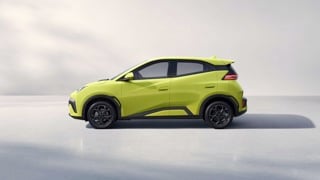Volvo Car Group has developed an alternative to the heavyweight, large and expensive batteries seen in hybrids and electric vehicles today with a new battery that can be fitted to car body panels.
The research project, which was funded by the EU, took place over 3.5 years and is now realised in the form of car panels within a Volvo S80 experimental car.
How it works
The answer was found in the combination of carbon fibres and a polymer resin.
The reinforced carbon fibres sandwich the new battery and are moulded and formed to fit around the car's frame, such as the door panels, the boot lid and wheel bowl, substantially saving on space.
The material is recharged and energised by the use of brake energy regeneration in the car or by plugging into a mains electrical grid. It then transfers the energy to the electric motor which is discharged as it is used around the car.
This material not only charges and stores faster than conventional batteries can, but is also strong and pliant.
Results so far
Today, Volvo Car Group has evaluated the technology by creating two components for testing and development. These are a boot lid and a plenum cover, tested within the Volvo S80.
The boot lid is a functioning electrically powered storage component and has the potential to replace the standard batteries seen in today's cars. It is lighter than a standard boot lid, saving on both volume and weight.
The new plenum demonstrates that it can also replace both the rally bar, a strong structural piece that stabilises the car in the front, and the start-stop battery.
This saves more than 50% in weight and is powerful enough to supply energy to the car's 12 Volt system
It is believed that the complete substitution of an electric car's existing components with the new material could cut the overall weight by more than 15%.
This is not only cost effective but would also have improvements to the impact on the environment.




















Nigel Boyle - 18/10/2013 13:03
No this could be a turning point!